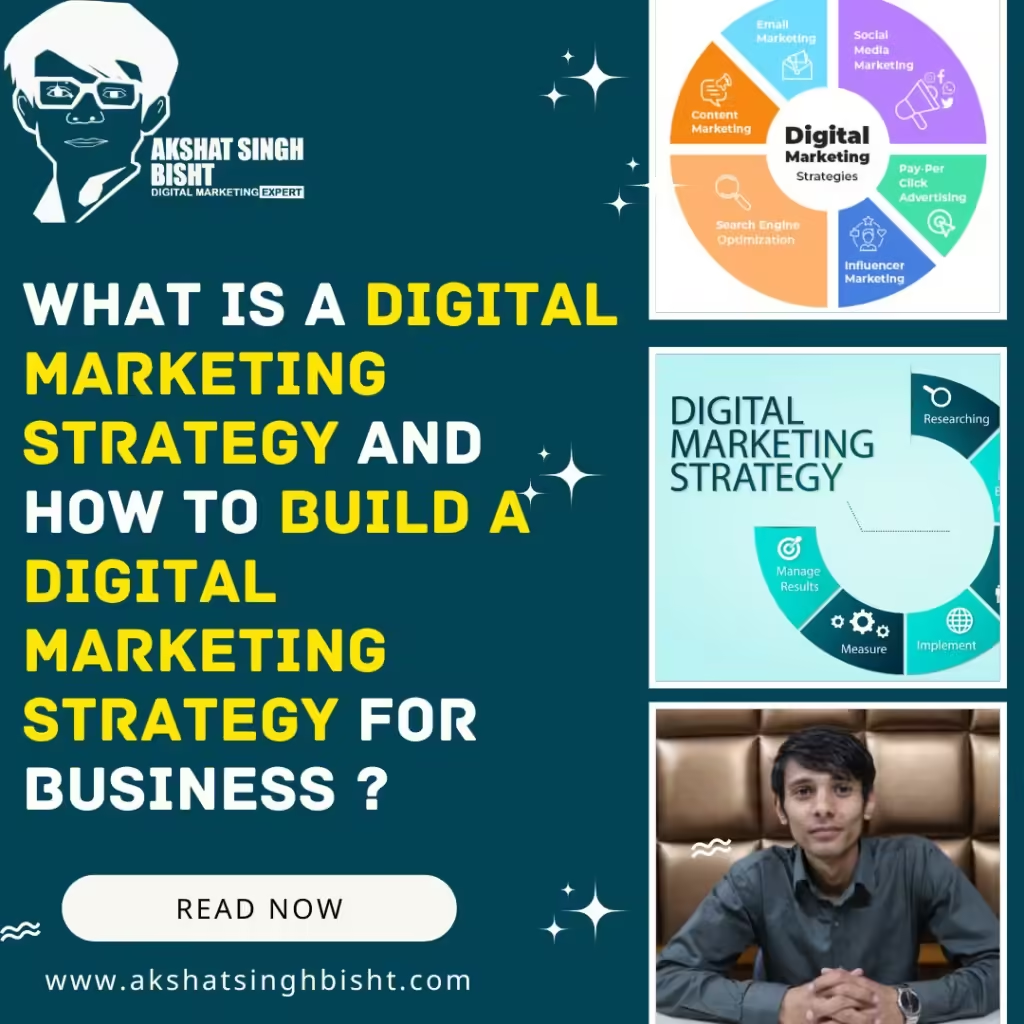A digital marketing strategy is a comprehensive plan that outlines how a business will achieve its online marketing goals using digital channels. It defines which digital platforms, tactics, and content will be utilized to reach and engage a target audience, convert them into customers, and retain them long-term. At its core, a digital marketing strategy provides the blueprint for aligning a brand’s online presence with its business objectives, guiding both the messaging and the metrics for measuring success.

Goal Setting: The first step is defining specific, measurable, and realistic goals. These can range from increasing website traffic to improving lead generation or enhancing brand awareness.
Target Audience Identification: Understanding who the customers are, what their interests are, and where they spend time online is essential for crafting a message that resonates.
Market and Competitor Analysis: Analyzing competitors, industry trends, and customer behavior provides valuable insights into what works and what doesn’t in the current market landscape.
Selection of Digital Marketing Channels: Channels might include SEO, social media, email marketing, PPC, content marketing, and influencer partnerships. The best channels will depend on the target audience and business objectives.
Content Strategy: Effective digital marketing requires valuable and relevant content. A strategy will outline what type of content (blogs, videos, infographics) to produce and where it will be distributed.
Budget Allocation: A clear budget for digital marketing activities ensures that resources are spent efficiently. This could include costs for paid ads, tools, content creation, and collaborations.
Measurement and Optimization: A good strategy includes key performance indicators (KPIs) for each channel, allowing marketers to track progress and optimize their approach continuously. Tools like Google Analytics, social media insights, and CRM systems provide data to measure the effectiveness of campaigns.
A digital marketing strategy is essential because it:
A digital marketing strategy is vital for any business looking to thrive in the digital age, as it provides a structured approach to reaching potential customers and maximizing return on marketing investments.
Building a digital marketing strategy for a business involves planning, executing, and analyzing the different tactics and channels that will drive online growth and achieve specific goals. A well-constructed digital marketing strategy enables businesses to focus on the right channels, align with their target audience, and measure ROI effectively. Below is a comprehensive step-by-step guide to crafting a digital marketing strategy:
A well-designed digital marketing strategy is essential for modern businesses aiming to succeed online. By setting clear goals, choosing effective channels, and continuously optimizing, businesses can create a strong digital presence, engage customers, and drive growth in a competitive online environment.
Akshat’s passion for marketing and dedication to helping others has been the driving force behind AkshatSinghBisht.com. Known for his insightful perspectives, practical advice, and unwavering commitment to his audience, Akshat is a trusted voice in the marketing community.
If you have any questions simply use the following contact details.
Welcome ! Let me know how I can assist you today.


